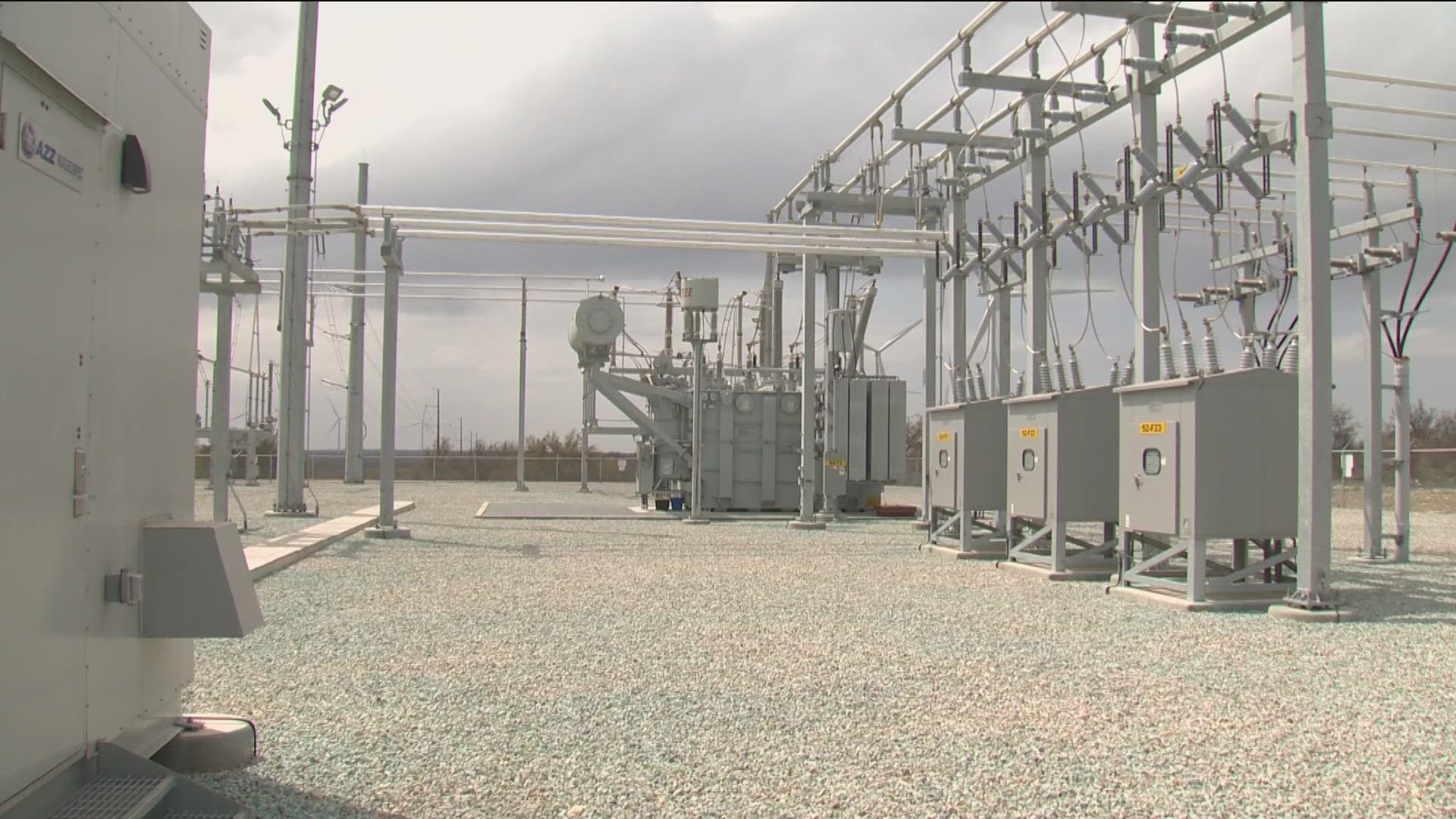AUSTIN, Texas — The power grid manager covering most of the state issued a weather notice to run through Friday, Jul 21. It means the extreme hot weather could put a big demand on the power grid.
“On July 14, 2023, at 10:30 AM ERCOT issued an OCN for the extreme hot weather with forecasted temperatures to be above 103°F in the North Central and South-Central weather zones, from Monday, July 17, 2023, until Friday, July 21, 2023,” a Sunday night public notice from the Electric Reliability Council of Texas (ERCOT) shows.
Monday’s demand for electricity broke the all-time record for demand. As of 5:45 p.m. Monday, demand hit 82,014 megawatts. The previous record was set four days prior, on July 13, with 81,405 megawatts.
Each time, ERCOT records show solar and wind energy helped manage that record demand. Solar farms provide peak power production during the day. Wind turbines usually make most electricity at night.
Those power resources broke records this summer.
The KVUE Defenders found not all of what wind and solar makes gets to people’s homes.
“If you look at the power plants that are trying to get built in the system right now, it's a lot of wind and solar because that's the cheapest thing there is to build and there is a high demand for it,” Joshua Rhodes, Ph.D., research associate at the Webber Energy Group/Energy Institute at the University of Texas at Austin, told the Defenders last year.
Big transmission lines carry energy from remote areas to city centers. Rhodes described the power travels like a car on a highway. When there is a high demand for electricity, some of the power produced around the state has traffic jams. The congestion costs everyone receiving an electric bill.
A July 2023 U.S. Energy Information Administration report shows it costs ratepayers billions for, “not having enough transmission capacity to move electricity from the lower-cost resource areas to the demand areas.”
The expense is expected to rise.
“Our analysis indicates that congestion costs may top $2.8 billion in 2035 given our assumptions for load growth, new resources, and minimal transmission upgrades,” the report shows.
ERCOT leaders expect us to have enough power moving to cover other record-breaking days.
In May, ERCOT predicted the highest demand would be 82,739 megawatts.
“Approximately 97,000 MW of summer-rated resource capacity is expected to be available for the summer peak load,” the Seasonal Assessment of Resource Adequacy for the ERCOT Region (SARA) Summer 2023 shows.
ERCOT records show capacity would not meet demand under specific scenarios, such as a record demand on a cloudy day with little to no wind power production and some power plants unexpectedly quitting working.
ERCOT has an alert system to handle extreme power demand, including calling for power to be reduced at select industrial facilities.

